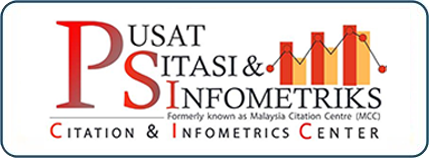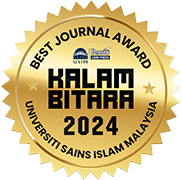INTERFAITH MARRIAGE CONTROVERSIES IN SEMARANG: AN ANALYSIS OF QUR'ANIC LEGAL EXEGESIS
DOI:
https://doi.org/10.33102/mjsl.vol12no3.812Keywords:
Interfaith marriage, Qur'anic, legal exegesis, controversies in SemarangAbstract
Interfaith marriage in Semarang has become a controversial issue, challenging established religious, cultural, and legal norms. The study aims to address two key questions on how Indonesian society responds to interfaith marriage and what role does the Qur'an play in the interfaith marriage controversy in Semarang. Through this study, we seek to gain an in-depth understanding of the interaction between religious teachings and social responses, with the broader aim of enhancing insights into the influence of Qur'anic exegesis on interfaith marriage dynamics. Th study adopts a qualitative approach, utilising document analysis and in-depth interviews. Primary participants include interfaith couples and Indonesian netizens. Data collection is conducted through interviews, field observations, and document analysis, including Qur'anic exegesis, religious decrees, fatwas, and public commentary. Thematic analysis is applied to identify evolving patterns in Islamic legal understanding and its impact on social harmony. In Semarang, interfaith marriage has proved to be a contentious affair for both social and legal researchers owing to some of the intricate issues it entails. Interfaith couples often experience disapproval not only from their families but society as a whole. A considerable part of society shows contempt, as per the religious views such marriages can endanger the family’s spirituality. Nevertheless, there are some who advocate for Indonesian multiculturalism and the values of respect and social harmony thus viewing interfaith marriages as legitimate. This dispute includes discussions of Qur’anic interpretation and Islamic law as they assert different viewpoints regarding the legitimacy of marriage of Muslims with Ahl al-Kitab. What aggravates the situation along with the ambiguous national legislation is the fatwa that was promulgated by Majelis Ulama Indonesia about interfaith marriages. This paper responds to the identified problems by offering some recommendations for communication, better understanding around the differences as well as the maqasid al-shari’ah objectives of protecting religion and nashab.
Downloads
References
Abū Dāwud, S. Ibn Al-A. Ibn I. Ibn B. Ibn S. Ibn ʻAmru Al-A. Al-S. (2009). Sunan Abī Dāwud. Dār al-Risālah al-ʻĀlamiyah.
Al-Baghawi, A. M. H., & Mas’ud, I. (1989). Tafsîr al-baghawi. Dar al-Ma’rifah.
Al-Baghawī, Ḥ M. (2003). Tafsīr al-Baghawī: Maʿālim al-tanzīl. Dār Ibn Ḥazm.
Al-Baghawi, H. (1997). Al-Tahdheeb fi fiqh al-Imam al-Shafi’i. Dar al-Kutub al-Ilmiyya.
Al-Baghawī. (n.d.). Tafsīr al-Baghawī al-musammā maʿālim al-tanzīl. Beirut: Dār Iḥyāʾ Al-Turāth al-ʿArabī.
Alias, M. A. A., Mohd Jailani, M. R., Wan Ismail, W. A. F., & Baharuddin, A. S. (2024). The integration of five main goals of shariah in the production of science and technology for human well-being. AL-MAQASID: The International Journal of Maqasid Studies and Advanced Islamic Research, 5(1), 1–16. https://doi.org/10.55265/al-maqasid.v5i1.79
Al-Qurthubî, M. A. (1993). Anshâri, al-jâmi’li ahkâm al-Qur’ân. Dar al-’Ilmiyat.
Al-Qurthubi, S. I. (2007). Tafsir Al-Qurthubi/Syeikh Imam Al-Qurthubi. Pustaka Azzam.
Al-Syaukani, M. I. A. (1983). Nail al-authar, syarkh muntaqha’al-akhbar min ahadis sayyid al-akhyar. Dar al-Fikr.
Al-Thabari, J. (2009). Tafsir Ath-thabari. Pustaka Azzam.
Al-Thabari, M. I. J. (2000). Jâm’Al-Bayân fî Ta’wîl Ayi Al-Qur’ân. Muassasah Al-Risâlah.
Al-Zuhaili, W. (1997). Al-fiqh al-hanbali al-muyassar bi adillatihi wa tatbiqatihi al-mua ’sirah. Dar al-Qalam.
Al-Zuhayli, W. (2000). Al-fiqh al-Maliki’l-muyassar ahkam al-usrah. Dar al-Kalam al-Tayyib.
Ambrose, S., Huston, T., & Norman, M. (2005). A qualitative method for assessing faculty satisfaction. Research in Higher Education, 46(7), 803–830. https://doi.org/10.1007/s11162-004-6226-6
Az-Zuhaili, W. (2013). Tafsir Al-Wasith. Gema Insani.
Basid, A. (2018). Kaidah kualifikasi intelektual mufassir. Al Yasini: Jurnal Keislaman, Sosial, Hukum Dan Pendidikan, 3(1), 25-33.
Basid, A. (2022). I’tikaf therapy as an effort to prevent terrorism: A study of Al-Qurtubi’s interpretation of QS. Al-Baqarah: 187. AL QUDS: Jurnal Studi Alquran Dan Hadis, 6(3), 2580-3190. https://doi.org/10.29240/alquds.v6i3.4279
Basid, A. (2023). Protection of the Qur’an against the disposal of infants on Covid-19 era: A case study on tvonesnews.com YouTube channel. In the proceeding of Proceedings of the International Seminar on Language, Education, and Culture, (pp. 3-14). https://www.atlantis-press.com/proceedings/isolec-22/125985707
Bukhari. (1993). Shahih Al-Bukhari. Darul Kitab.
Candra, G., Gautomo, K. I., & Pangestu, M. D. A. (2022). Hukum waris pada perkawinan beda agama menurut pluralisme hukum waris di Indonesia. Civilia: Jurnal Kajian Hukum Dan Pendidikan Kewarganegaraan, 1(2), 71-83. https://doi.org/10.572349/civilia.v1i2.157
Dārimiy, A. M. (2015). “Musnad al-Imām al-Dārimiy”. Shamela. https://shamela.ws/book/36114
Denzin, N. K., & Ryan, K. E. (2007). Qualitative methodology (including focus groups). In Handbook of social science methodology. Sage Publication.
Elmali-Karakaya, A. (2022). Interfaith marriage in Islam: Classical Islamic resources and contemporary debates on Muslim women’s interfaith marriages. Religions, 13(8), 1-21. https://doi.org/10.3390/rel13080726
Enghariano, D. A., & Asra, A. (2017). Tafsir ayat-ayat hukum tentang pernikahan beda agama menurut Rasyid Ridha dan al-Maraghi. Jurnal Syahadah, 5(1), 71-106.
Fatah, A., & Shofaussamawati, S. (2022). Qur’anic digital civility: Contemporary Indonesian Muslim interaction on social media. Jurnal Theologia, 33(2), 171-202. https://doi.org/10.21580/teo.2022.33.2.13367
Hanapi, A., & Hasballah, K. (2022). Kedudukan metode al-Qāfah dalam penetapan nasab anak menurut ulama perspektif maqashid al-Syariah. De Jure: Jurnal Hukum Dan Syar’iah, 14(1), 21–37. https://doi.org/10.18860/j-fsh.v14i1.15875
Hastuti , I. ., Sanjaya, E. . ., & Prasetyo, B. . (2022). Interfaith marriage and its legal consequences for children born according to Islamic law. International Journal of Educational Research &Amp; Social Sciences, 3(1), 509–517. https://doi.org/10.51601/ijersc.v3i1.303
Heriawanto, B. K. (2019). Interfaith marriages based on positive law in indonesia and private international law principles. UNIFIKASI: Jurnal Ilmu Hukum, 6(1), 94. https://doi.org/10.25134/unifikasi.v6i1.1571
Hidayatullah, T., & Moechthar, O. (2023). Inter-religious marriage: A comparison analysis of Indonesian law with other countries. Notaire, 6(2), 291–306. https://doi.org/10.20473/ntr.v6i2.45871
Husain, W. A. F. W., Husain, W. R. W., & Lateh, H. M. (2024). The role of the religious scholars of Faqih Ali Dato’ Maharaja’s descent in upholding Sharia implementation in Terengganu. Malaysian Journal of Syariah and Law, 12(1), 216–227. https://doi.org/10.33102/mjsl.vol12no1.674
Ibn Anas, M. (1991). al-Muwaṭṭa’. Mu’assasah al-Risālah.
Ibn Kathir. (1978). Al-bidayah wa al-nihayah. Dar Al-Fikr.
Ibn Kathir. (1996). Tafsir al-Quran al-a’zim. Dar al-Andalas.
Ibrahim, M. S. R. (2023). Concept of marriage from the Hasbi Ash-Shiddieqy perspective: An approach maqasidi on verses of polygamy and inter-religious marriage. MIQOT: Jurnal Ilmu-Ilmu Keislaman, 47(1), 125-148. http://jurnalmiqotojs.uinsu.ac.id/index.php/jurnalmiqot/article/view/1078
Indrayanti, K. W., Nanda, A., & Putra, E. N. (2024). Questioning human rights, looking for justice: Analyzing the impact of supreme court circular letter on interfaith marriages in Indonesia. Journal of Indonesian Legal Studies, 9(1), 385–416. https://doi.org/10.15294/jils.vol9i1.4634
Indrayanti, K. W., Suhariningsih, S., Rubai, M., & Aprilianda, N. (2017). Juridical implications of the legal norm void of interfaith marriages in Indonesia. Brawijaya Law Journal, 4(1) 129-143. https://eprints.unmer.ac.id/id/eprint/3125/
Iskandar, N. (2024). Halal without label: Implementation of maqāṣid al-sharī’ah in community-based tourism in Kerinci, Indonesia. Malaysian Journal of Syariah and Law, 12(1), 192–205. https://doi.org/10.33102/mjsl.vol12no1.477
Jarir, A. J. M. (1992). al-Thabari. Tārīkh Al-Thabari: Tārīkh al-rusul wa al-muluk.
Jasas, A. (n.d.). Ahkam Al-Qur’an. Darul Kitab.
Jawad, H., & Elmali-Karakaya, A. (2020). Interfaith marriages in Islam from a woman’s perspective: Turkish women’s interfaith marriage practices in the United Kingdom. Journal of Muslim Minority Affairs, 40(1), 128-147. https://doi.org/10.1080/13602004.2020.1737415
Maghnīyah, M. J. (2008). al-Fiqh’ala al-madhahib al-khamsah: al-Ja’fari-al-Hanafi-al-Maliki-al-Shafi’i-al-Hanbali. Dar al-Tiyar al-Jadid.
Munir, M., & Rachmawati, A. R. (2020). Tinjauan hukum Islam terhadap nikah beda agama dalam kitab tafsir Al-Ahkam karya Syaikh Aly Al-Shabuny. Jurnal ASA 2(2), 24–37. https://ejournal.stisabuzairi.ac.id/index.php/asa/article/view/8
Muthalib, S. A., Jakfar, T. M., Maulana, M., & Hakim, L. (2021). Changes in congregational prayer practices during the Covid-19 pandemic in Aceh from maqashid al-sharia perspective. Al-Ihkam: Jurnal Hukum Dan Pranata Sosial, 16(2), 421–449. https://doi.org/10.19105/AL-LHKAM.V16I2.5250
Nur Mahmudah, S., Ghozali, L., & Ritonga, I. (2022). Implementation of Sharia maqashid on sukuk based on fatwa DSN-MUI/IX/2020. Jurnal Ilmiah Islam Futura, 22(2), 139–149. https://doi.org/10.22373/jiif.v22i2.12296
Nuryanti, S., & Ahmad, M. J. . (2022). Hukum perkawinan pasangan beda agama di Indonesia. Bureaucracy Journal: Indonesia Journal of Law and Social-Political Governance, 2(1), 303–315. https://doi.org/10.53363/bureau.v2i1.134
Pelu, I. E. A. S., Asfia, H., Tarantang, J., & Supriadi, A. (2022). Sex recession phenomenon from the perspective maqashid Sharia based on objectives marriage law in Indonesia. Al-Istinbath: Jurnal Hukum Islam, 7(1), 39–54. https://doi.org/10.29240/jhi.v7i1.4204
Qohar, A., Zaki, M., Faizal, L., & Rofi’i, H. Y. (2022). Mut’ah marriage law in perspective of Sayyid Husain Al-Thaba’thabaí and their relevance with family law in Indonesia. Al-Istinbath: Jurnal Hukum Islam, 7(1), 223–240. https://doi.org/10.29240/jhi.v7i1.3714
Qutub, S. (1961). Tafsir fi dhilali al-Qur’an. Dar al-Kutub Al-Ilmiyah.
Salam, N., Purnomo, A., Saifullah, S., & Ahmad, S. (2024). Interfaith marriage from the perspective of rationality: Theocentrism in Islamic law and anthropocentrism in human rights law. De Jure: Jurnal Hukum Dan Syar’iah, 16(1), 179–196. https://doi.org/10.18860/j-fsh.v16i1.23989
Shihab, M. Q. (2013). “Kaidah tafsir”. Google Books. https://books.google.com/books?hl=en&lr=&id=E0vZDwAAQBAJ&oi=fnd&pg=PP1&dq=%22quraish+shihab%22&ots=CxzzisMEW5&sig=zcZ_XGoufwe3FAwMg7uqdAo7YBo
Sion, L. (2023). Innocent girls, wicked women: interfaith marriages, class, and ethnicity in Israel. Ethnic and Racial Studies, 46(15), 1–22. https://doi.org/10.1080/01419870.2023.2192302
Syaukânî, M. I. A. (2000). Irsyâd al-Fuhûl ilâ tahqîq al-haq min ’ilmi al-ushûl. Dâr al-Fadhîlah.
Thahir, A. H. (2024). Towards the multidimensional ushul al-fiqh: A Study of the integration of science in the fatwa of Majelis Ulama Indonesia. Samarah, 8(2), 687–705. https://doi.org/10.22373/sjhk.v8i2.19686
Tirmiżiy, A. (1996). al-Jāmiʻ al-Kabīr (Sunan al-Tirmiżiy). Dār al-Garb al-Islāmiy.
Turnip, I. R. (2021). Perkawinan beda agama: Perspektif ulama tafsir, fatwa MUI dan hukum keluarga Islam di Indonesia. Al-Tadabbur: Jurnal Ilmu Al-Qur’an Dan Tafsir, 6(01), 107–140. https://doi.org/10.30868/at.v6i01.1337
Zin, N. M., Jani, H. M., Hamid, A. G., & et al. (2019). Jurisdictional conflict in interfaith child custody disputes: A legal discourse in Malaysian courts. Al-Shajarah, 24(1),1-24. https://journals.iium.edu.my/shajarah/index.php/shaj/article/view/851
Zuhaili, M. (2010). Al-Mu’tamad fi al-fiqh al-Syafii. Dar al-Qalam.
Downloads
Published
Issue
Section
Categories
License
Copyright (c) 2024 Abdul Basid, Lilik Nur Kholidah, Muhammad Fahmi Hidayatullah, Eka Kurnia Firmansyah, Ahmad Iwan Zunaih, Reza Ahmad Zahid

This work is licensed under a Creative Commons Attribution-NonCommercial 4.0 International License.














































